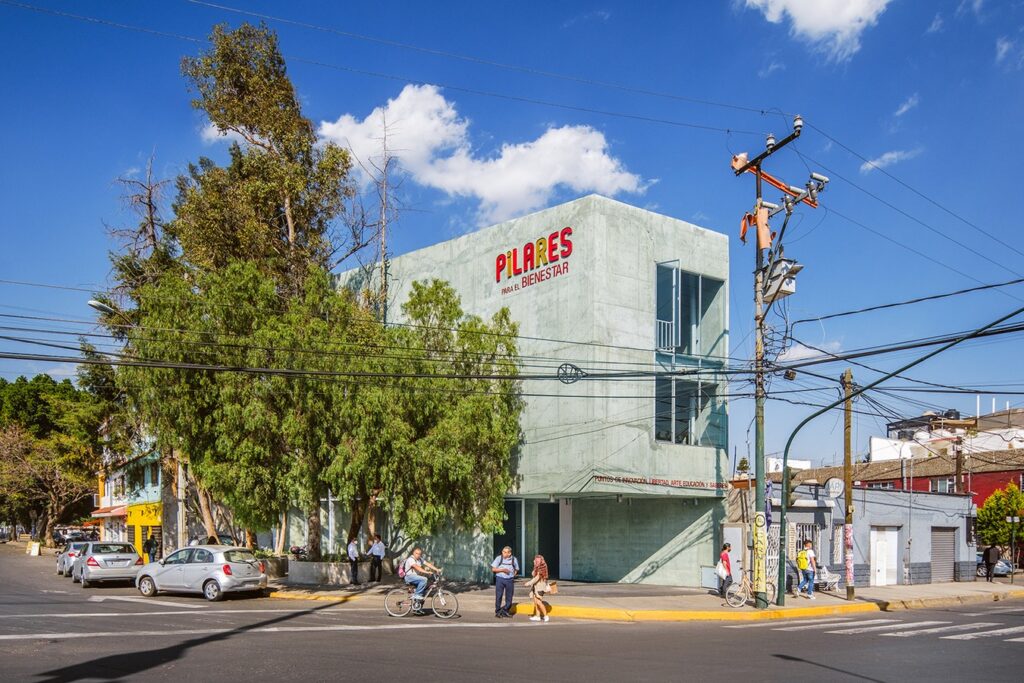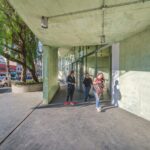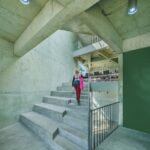
In response to the critical need for educational and communal spaces, the Mexico City government initiated the PILARES initiative in 2018, aiming to establish one hundred community centers in underserved neighborhoods. These centers, representing Points of Innovation, Freedom, Art, Education, and Knowledge, are designed to provide a wide array of classes, workshops, cultural programs, and safe leisure spaces for residents.

International Collaboration for Local Impact
In January 2020, Mexico enlisted international design studios to oversee 26 PILARES projects. IUA Ignacio Urquiza Arquitectos and WORKac were among the selected firms, focusing on the specific needs of their sites. The collaborative effort resulted in community centers tailored to the social context, offering spaces for cyberschool and robotics classes, as well as jewelry-making and screenprinting workshops.
Integrating with the Community: A Research-Driven Approach
Teaming up with Ignacio Urquiza Architects, extensive research was conducted on existing PILARES buildings to understand their community relationships. The primary focus became clear: a seamless connection between the indoor and outdoor spaces at street level and the flexibility to encourage diverse uses. This adaptability was deemed essential, allowing visitors to transform the spaces to meet their evolving needs.

Tailored Designs for Distinct Sites
PILARES Lomas de Becerra and PILARES Azcapotzalco share similar physical characteristics, situated at busy intersections on corner properties with existing vegetation. The design incorporated existing trees into the building’s structure, creating a harmonious blend with the surroundings.
Innovative Architectural Elements
Diagonal cuts on the ground floor of both centers facilitate free-flowing pedestrian routes, encouraging engagement with the surrounding park. The lightweight glass façade on the ground floor opens outward, extending the community spaces into the street. PILARES Lomas de Becerra incorporates an access platform doubling as an auditorium and staircase for cultural activities.

Openness and Inclusivity
Both ground floors feature open spaces with glass façades that can expand into the street, fostering accessibility and community engagement. The three-floor structures are organized around a central staircase, providing natural light and ventilation. Vertical circulations connect platforms, each serving various purposes, from multipurpose spaces to areas dedicated to specific activities.
Adaptable Spaces for Diverse Activities
Since their inauguration, the PILARES projects by WORKac and IUA have dynamically adapted to the community’s needs. While some spaces are utilized for intended purposes, others remain open, hosting a range of activities, including martial arts, dance and hip-hop classes, and yoga. The centers have become vibrant hubs for intergenerational participation, fulfilling the community’s desire for spaces to move, learn, and live.
In essence, the PILARES community centers stand as flexible, adaptive structures, organically weaving into the cultural fabric of Mexico City’s underserved neighborhoods.






























Leave a Reply